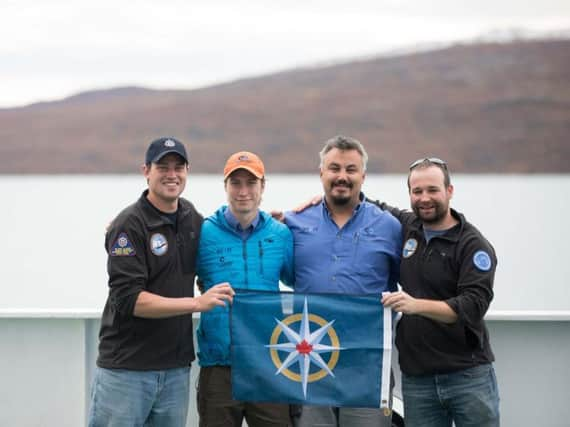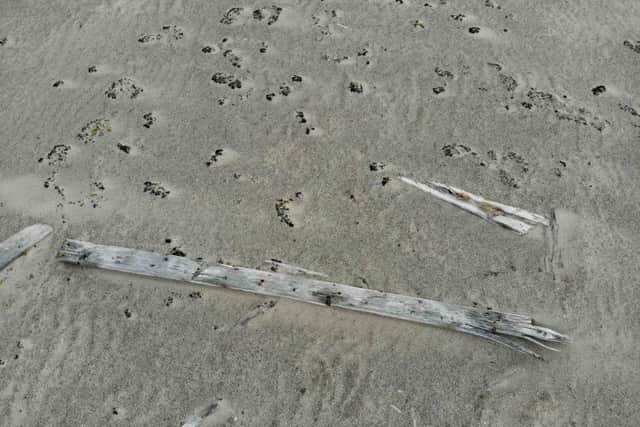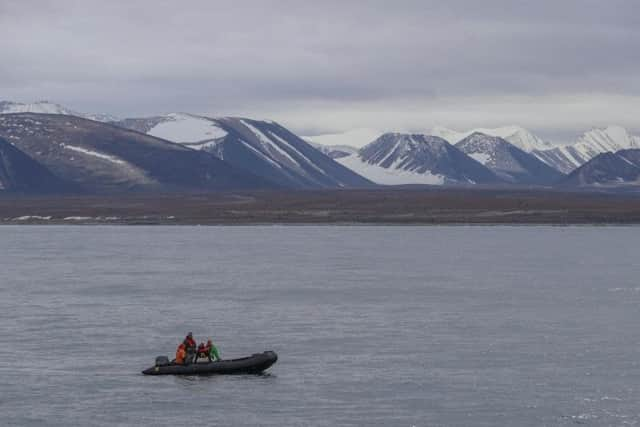Lost wreckage of whaling ship discovered by Sunderland graduate in Arctic seas


University of Sunderland PhD graduate Matthew Ayre alongside underwater archaeologist Michael Moloney located the previously unknown wreckage of the Nova Zembla in the Canadian High Arctic.
The ship hit a reef off the east coast of Baffin Island in 1902, and is believed to be the first of dozens of British whaling shipwrecks to be found in the waters.


Advertisement
Hide AdAdvertisement
Hide AdMatthew hopes the remains of the vessel will offer significant historical insight into life in an industry that dominated Canadian waters for centuries.
“We were thrilled by this discovery and it's going to tell us a lot about what life was like aboard a whaler," he said.
Michael added: “This discovery was the culmination of months of research and preparation, and we can't wait to continue working with all our partners to further explore this site.”
The two researchers located the wreck using the historical documents and newspaper clippings connected to the 19th Century Arctic whaling trade.


Advertisement
Hide AdAdvertisement
Hide AdWith just a drone, a dinghy and only an eight-hour window, Matthew and Michael located found wreckage, and wood from the ship's mast still strewn across a beach.
The Nova Zembla met its end near Buchan Gulf off the east coast of Baffin Bay at 10.20pm, on Thursday, September 18, 1902, while trying to escape a storm.
She sank fast and the crew had little time to abandon ship. Her valuable cargo of whalebone was rescued from her stores and transferred to the Diana, which revisited the wreck the following year and salvaged her rudder.
Her crew was rescued by fellow whalers, the Diana and Eclipse, and it is from their logbooks that information about the events of that evening have been gleaned.
Advertisement
Hide AdAdvertisement
Hide AdAlongside newspaper testimonies from the crew on their return, these first-hand accounts placed the wreck near a remote harbour on the east coast of Baffin Island, in shallow water.
The discovery of the Nova Zembla offers insight into the little-known social history of the whaling industry. There are very limited accounts of the daily lives of whalers, and particularly the sailors that plied the treacherous waters of the Arctic and contributed to the geographic understanding of the region.
For centuries, whaling was an integral part of life in the Arctic and whalers interacted with and, in some cases, integrated into Inuit communities. While the relationship was not always a peaceful one, many whaling companies incorporated Inuit knowledge into their own practices, and later passed that information on to the Royal Navy during their explorations of the Arctic.
“It’s a largely untold part of the story, with most of the attention directed towards the Royal Navy searches for the North West Passage and Franklin,” said Michael.
How the ship was found
Advertisement
Hide AdAdvertisement
Hide AdMatthew, who is now a Post-Doctoral Fellow at University of Calgary’s Arctic Institute of North America, came across details of the Nova Zembla wreck in March of this year while poring over historical documents for his climatological research at the Institute's SSHRC funded Northern Seas project, where he is compiling baseline information on sea ice and wind conditions in the Arctic.
One of the documents was the logbook of the Diana, one of two whaling vessels that rescued the crew of the Nova Zembla, and it contained clues to the whereabouts of the wreck site in the fiord.
Shortly after, Matthew then found a type-written version of a diary from a sailor aboard the Diana in 1903, the year after the wreck, which explained how they returned to the wreck site to salvage some equipment, including the rudder.
“I thought, ‘Oh, the wreck is accessible,’” says Matthew. “They’ve gone back to it. They can actually see it, and they’ve taken something from it. That’s when I got interested and told Mike.”
Advertisement
Hide AdAdvertisement
Hide AdHe and Michael received support for the expedition from the University of Calgary and the Royal Canadian Geographical Society (RCGS).
They made their discovery on August 31, in just eight hours using drone footage and SONAR imaging deployed on a remote-operated underwater vehicle in a targeted five-square-kilometer search area identified through months of historical research.
Matthew, 31, from North Tyneside, landed his role at Calgary as a result of his research on the ARCdoc project at Sunderland analysing historical logbooks recorded by explorers, whalers and merchants during epic expeditions between 1750 and 1850.
The ARCdoc project was created to increase our scientific understanding of climate change in this environmentally important region.
Advertisement
Hide AdAdvertisement
Hide AdThe duo began to compile newspaper records on the wreck, a first-hand account from a diary of a Nova Zembla crewmember, and other documents, cobbling together bits of information to create an extremely targeted search area for an expedition.
In August, the pair embarked on a One Ocean Expeditions voyage through the Northwest Passage and Greenland aboard their vessel Akademik Sergey Vavilov. The ship departed on August 30.
The next morning at 6am, Matthew, Michael and One Ocean crew members Ted Irniq and Kelson Rounds-McPherson set out in a Zodiac, battling one-and-a-half-metre swells as they made their way toward the search area, a windblown stretch of beach near Buchan Gulf. They had only a short window of time to find evidence of the Nova Zembla.
“We knew that the beachfront was what we were targeting. That was what we had triangulated from those historical documents. Then it became your traditional sit and wait and stare at a SONAR screen for hours,” says Michael.
Advertisement
Hide AdAdvertisement
Hide AdArmed with satellite imagery of what appeared to be the hull of a ship near the wreck site, the pair first set out to discover the nature of the intriguing shape below the water. Unfortunately, that lead turned cold. “It was a collection of rocks,” Matthew says.
However, using an ROV supplied by DeepTrekker, the team was able to obtain SONAR imagery that revealed some promising shapes, including what appears to be one of the anchors of the ship — straight lines and right angles are indicative of man-made materials, says Michael. But it was on the nearby beach that they discovered the most promising evidence of the wreck.
Through binoculars aimed at the shore, Matthew spotted what looked like pieces of wood on the sand, so he deployed a drone and was amazed at what he saw on the monitor. Pieces of spars and large timbers with metal rivets were scattered across the beach.
Unfortunately, their drone battery drained in just a few minutes from the cold, so Matthew could only search for a few minutes before he flew it back to the Zodiac with just seconds to spare.
Advertisement
Hide AdAdvertisement
Hide Ad“I reckon this is the cheapest and fastest shipwreck discovery in history,” said Matthew.
Back home in Calgary, the pair will continue to process their SONAR and drone imagery to pinpoint more evidence of the Nova Zembla. They plan to revisit the wreck site in 2019, and hope to partner with local Inuit to conduct further research on the wreck.
“The whole goal of the expedition was to discover if there’s something there or not,” says Michael, “and now we know there’s something there.”
“This is a previously unknown archaeological site, and the first High Arctic whaling ship ever discovered,” said John Geiger, Chief Executive Officer of the RCGS.
“It is a remarkable story of historical sleuthing supported by fieldwork and adds considerably to the historical record by shedding new light on that treacherous, once great industry.”